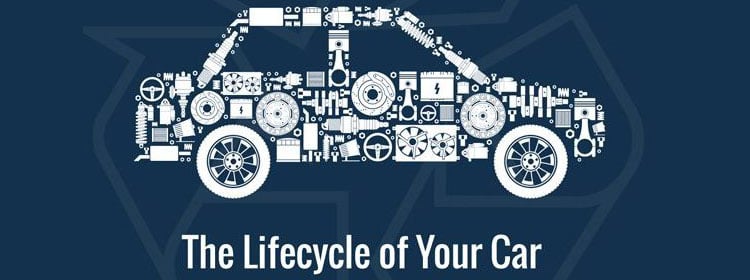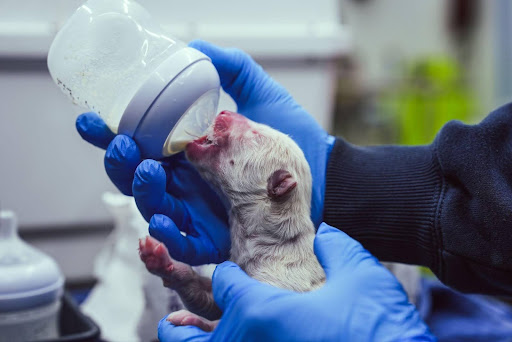
Our cars are an integral part of our day to day lives, but have you ever been curious about the life cycle of your car? How was this big, complicated machine designed and brought together before you saw it for the first time? What happens to it after it’s no longer yours, or maybe beyond that when it’s no longer drivable?
The average lifespan of a car has nearly doubled in the last 50 years, from around 100,000 miles in the 1970s to around 200,000 miles today. With the average car consisting of 30,000 different pieces, your car’s own journey from design sketch to scrap yard may surprise you.
Step One: Design
The creation cycle for most cars from the design stage to the point of manufacturing is a lengthy five to six years. This time accounts for research, design, modeling, advertising, and enter production.
What this means is that car manufacturers have to think half a decade into the future when designing new vehicles. Companies must consider new designs that will be compatible with their current lineup, and anticipate consumer needs and trends.
It’s important for manufacturers to identify their market at this time, and keep that market in mind while making their designs. This phase of research also includes keeping an eye on what competitors are planning.
When coming up with design concepts for new vehicles, there’s a lot for designers to consider. What lifestyles will the car accommodate and at what price range? What features may be more broadly available in a few years when the car enters the manufacturing stage?
With these (and many other) considerations in mind, a series of sketches will be drafted. Several of these sketches may be turned into small models, which allow design teams to see how their sketched designs look in three-dimensional space. From these models, there are a series of revisions before reaching “design freeze,” which marks the end of the initial design timeline.
Step Two: Development
One of the next steps is the creation and demonstration of a concept car. A concept car is an experimental version of a vehicle designed to show off new design features or technology, and tend to be showier and less practical than the version that will be released to the market in coming years. These concept cars are demonstrated or premiered at trade shows or other major car events.
While the premiere of the concept car is an exciting announcement, behind the scenes the build and development of the car consumers will be able to purchase continues. At this phase, the car will be tested for how well it withstands accidents, fuel economy, aerodynamics, and more. The car has to be certified for safety and emissions before it can be released to the market. Limited tests will be run with customers to seek feedback on the new design.
Now that the car is ready to enter the manufacturing stage, an evaluation is made of current market prices and pricing metrics are set for the car. A few months before the car hits showroom floors, advertising campaigns begin and for the first time, consumers get to see their latest options for a new vehicle.
Step Three: Manufacturing and Sale
There are approximately 70 million new cars manufactured each year, with the US market being the second biggest market for vehicle production and sales in the world. The average car takes about one day to build, but it varies between manufacturers. Some cars can be built in as little as 13 hours, while vehicles from luxury brands that have hand-made components may take several months to put together.
Despite 70 million cars being made a year, only about 17 million of those units will be sold annually in the country. This leaves the question of where over 50 million cars each year are going. Many of these vehicles will be exported and sold internationally.
For cars remaining unsold at dealerships, they first will be sold to markets that need them more (ie trucks being moved to rural areas for sale), or if that doesn’t work, they will be sold at auction and later be available at a reduced cost to consumers. Most popular local sales channel (even for junk cars). With less than one-third of Americans driving cars under five years old, the market for older models in good condition is growing all the time.
Step Four: Life on the Road
Six years isn’t just the magic number for the design and manufacturing process for a car, it’s also the number of years the typical driver will keep their vehicle once they’ve purchased it. Most cars will have three to four owners within their drivable lifespan, which nowadays is between 160,000 to 200,000 miles but increasing all the time.
Most people drive around 15,000 miles a year and will spend just shy of $7,000 a year on gas, lease payments, and maintenance for a new sedan. The average age of cars on the road now is 11.6 years, meaning more people are turning to used vehicles and are keeping them for longer.
Step Five: Recycling
After many miles and many memories with your car, a time will come that it’s no longer drivable, whether due to an accident or plain old aging. Luckily, your car can live on through the recycling process, which is one of the nation’s largest industries.
Of the approximately 12 million cars that reach the end of their lives every year, about 95% of them are recycled. After being sold to a recycling facility, a car is drained of any fluids before having usable parts salvaged. The rest of the body of the car goes through a process where machines separate it into three categories, which are iron and steel, nonferrous (meaning non-Iron based) metals, and “fluff,” aka textiles, plastic, and glass.
The metal that can’t be repurposed will be crushed down into a ball no bigger than your fist! Most rubber tire reuse is in road paving, and you can sometimes find the glass from vehicles in flooring or countertops. Many car manufacturers are also prioritizing using recycled materials from old vehicles in their new cars, bringing the life cycle of your car back to the beginning.


